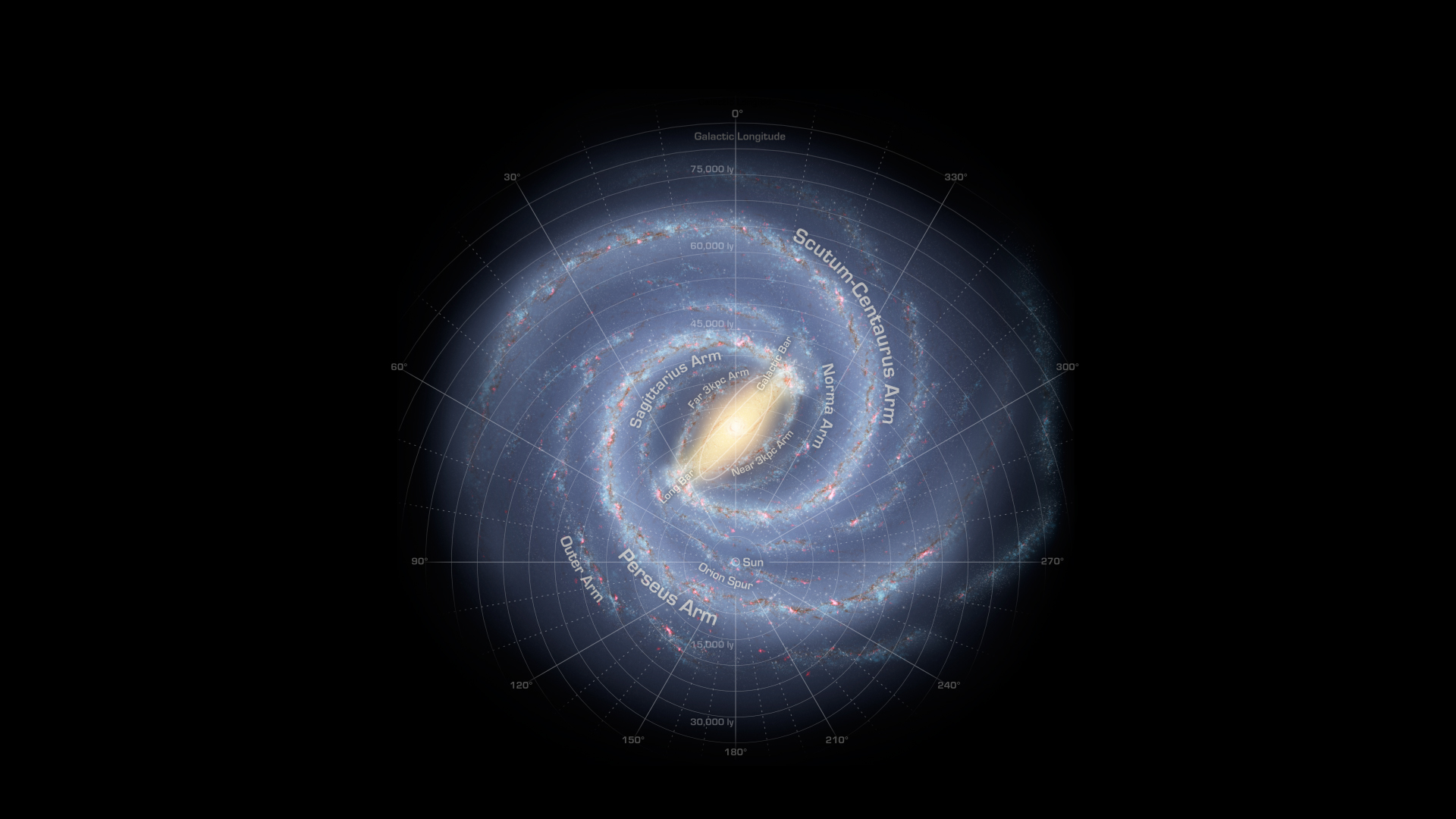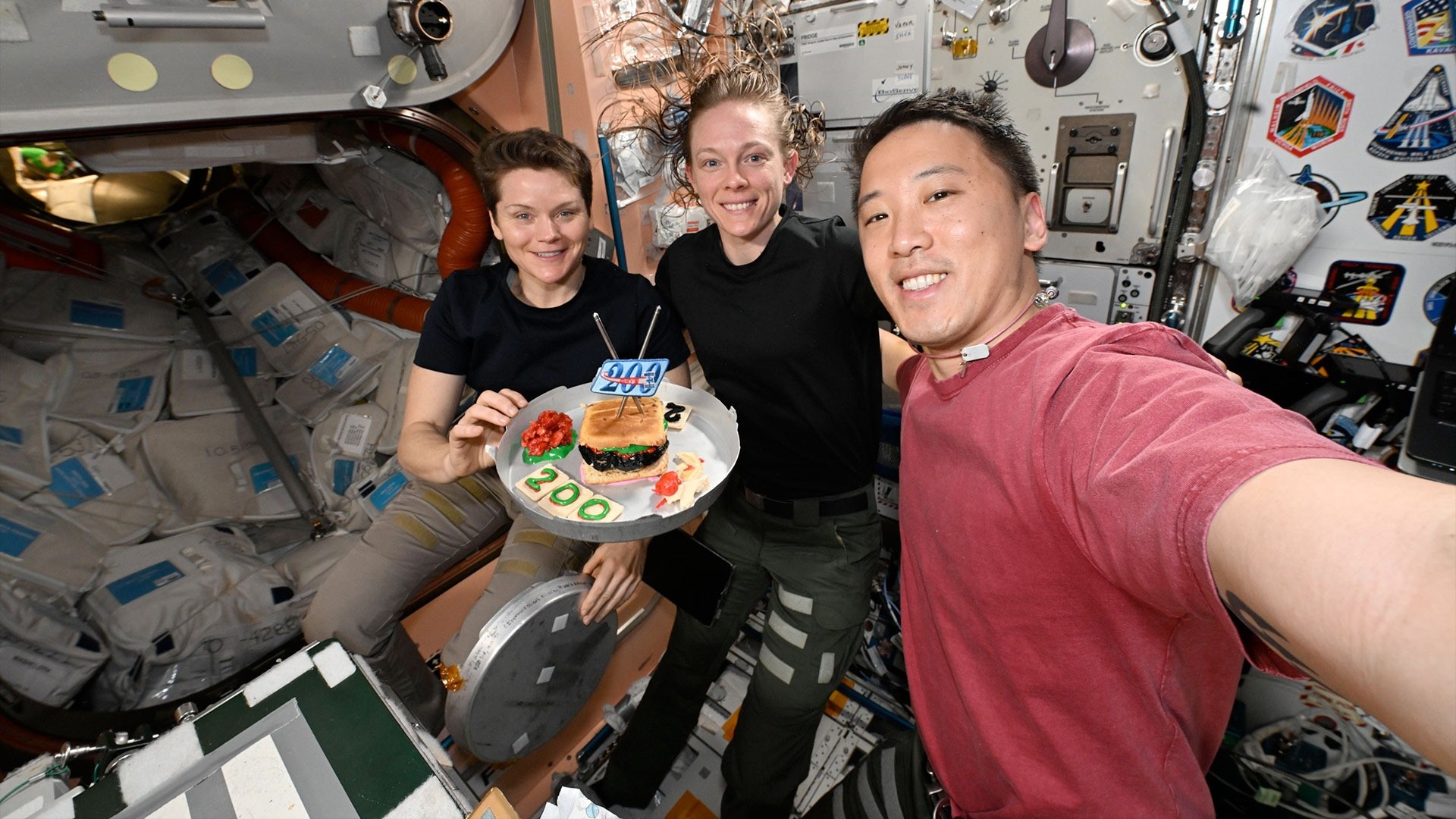
The boundaries of our home galaxy may have to be redrawn.
Astronomers have discovered the farthest-flung stars yet known in the Milky Way. The two objects — known as ULAS J0744+25 and ULAS J0015+01 — are about 775,000 and 900,000 light-years from Earth, respectively, making them both about five times more distant than a satellite galaxy known as the Large Magellanic Cloud.
"The distances to these two stars are almost too large to comprehend," study lead author John Bochanski, of Haverford College in Pennsylvania, said in a statement. "To put it in perspective, when the light from ULAS J0015+01 left the star, our early human ancestors were just starting to make fires here on Earth." [Our Milky Way Galaxy: A Traveler's Guide (Infographic)]
The Milky Way extends far beyond its familiar disk, which is just 100,000 light-years or so wide. The galaxy is surrounded by a sparse "halo" of stars — perhaps stragglers left out there after the Milky Way's many mergers with dwarf galaxies over the eons, researchers say.
Scientists know this halo extends to at least 500,000 light-years away, but its exact dimensions are unknown. Bochanski and his colleagues decided to probe the halo's outer reaches, hunting for a type of star called cool red giants.
Cool red giants are much rarer than red dwarfs, which make up about 70 percent of the Milky Way's stars. But they're about 10,000 times brighter, making them much easier to see from a distance.
"It really is like looking for a needle in a haystack," Bochanski said. "Except our haystack is made up of millions of red dwarf stars."
Breaking space news, the latest updates on rocket launches, skywatching events and more!
The team pored over images collected by the UKIRT Infrared Deep Sky Survey, which uses the United Kingdom Infrared Telescope in Hawaii, and the Sloan Digital Sky Survey, which employs a telescope in New Mexico. They detected ULAS J0744+25 and ULAS J0015+01 in these data, then confirmed them by taking spectroscopic data with the 6.5-meter telescope at the MMT Observatory in Arizona.
The two stars' extreme distance was confirmed by a variety of different estimation techniques, researchers said. ULAS J0744+25 and ULAS J0015+01 are more than 50 percent farther from the sun than any other Milky Way star yet discovered, researchers said. In fact, the famous Andromeda galaxy is just three times farther away than ULAS J0744+25 and ULAS J0015+01.
But the new study, which was published last week in Astrophysical Journal Letters, provides more than gee-whiz appeal. It could help astronomers test some of their models of the Milky Way's formation and evolution, team members said.
"We think these stars might be the brightest members of some leftover remnants of the MW's formation," Bochanski told Space.com via email. "We will need more observations to be sure of it, but if there are significant numbers of stars in the outer halo, then the models will need to be revised."
Follow Mike Wall on Twitter @michaeldwall and Google+. Follow us @Spacedotcom, Facebook or Google+. Originally published on Space.com.
Join our Space Forums to keep talking space on the latest missions, night sky and more! And if you have a news tip, correction or comment, let us know at: community@space.com.

Michael Wall is a Senior Space Writer with Space.com and joined the team in 2010. He primarily covers exoplanets, spaceflight and military space, but has been known to dabble in the space art beat. His book about the search for alien life, "Out There," was published on Nov. 13, 2018. Before becoming a science writer, Michael worked as a herpetologist and wildlife biologist. He has a Ph.D. in evolutionary biology from the University of Sydney, Australia, a bachelor's degree from the University of Arizona, and a graduate certificate in science writing from the University of California, Santa Cruz. To find out what his latest project is, you can follow Michael on Twitter.


